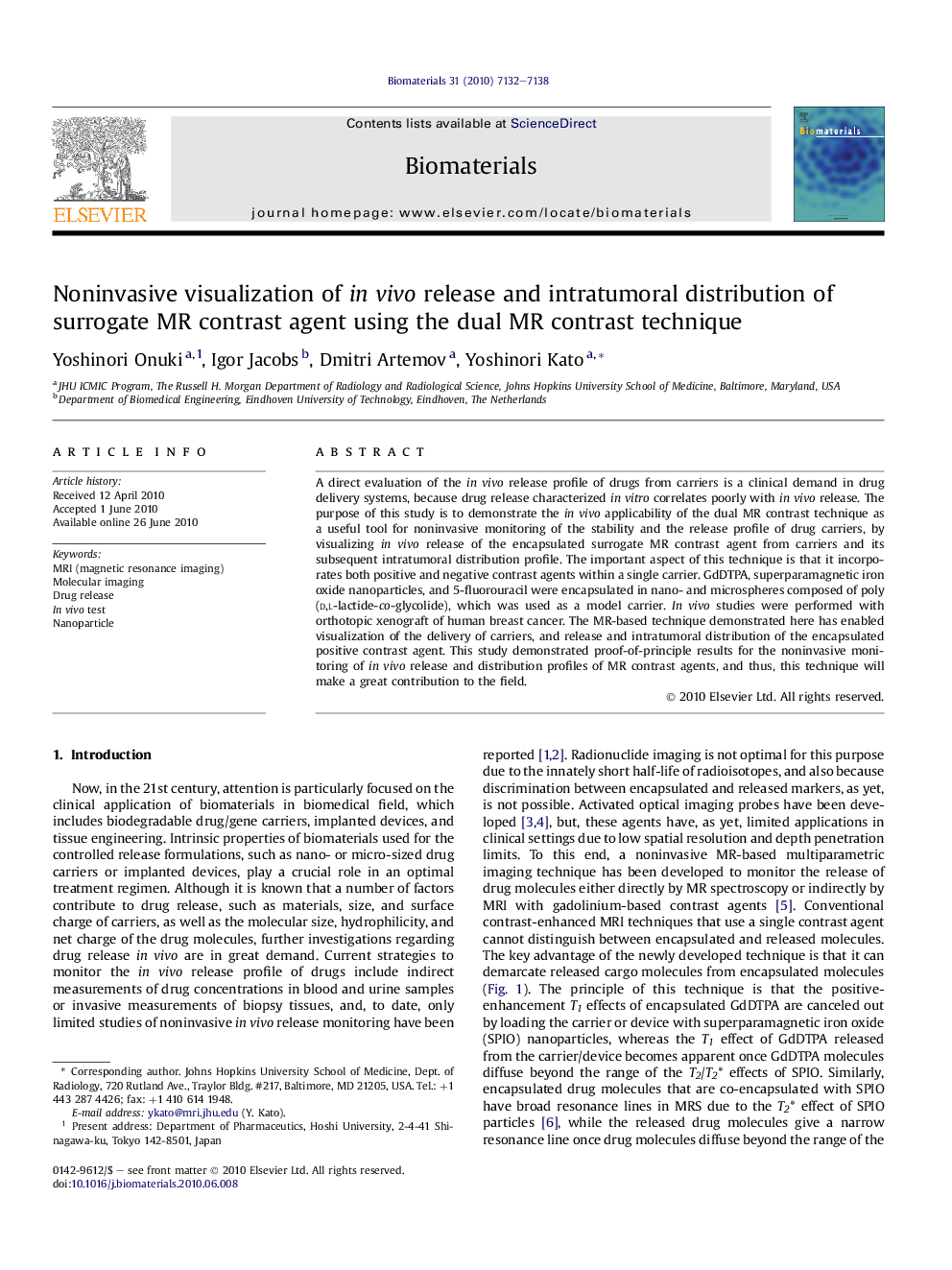| Article ID | Journal | Published Year | Pages | File Type |
|---|---|---|---|---|
| 8358 | Biomaterials | 2010 | 7 Pages |
A direct evaluation of the in vivo release profile of drugs from carriers is a clinical demand in drug delivery systems, because drug release characterized in vitro correlates poorly with in vivo release. The purpose of this study is to demonstrate the in vivo applicability of the dual MR contrast technique as a useful tool for noninvasive monitoring of the stability and the release profile of drug carriers, by visualizing in vivo release of the encapsulated surrogate MR contrast agent from carriers and its subsequent intratumoral distribution profile. The important aspect of this technique is that it incorporates both positive and negative contrast agents within a single carrier. GdDTPA, superparamagnetic iron oxide nanoparticles, and 5-fluorouracil were encapsulated in nano- and microspheres composed of poly(d,l-lactide-co-glycolide), which was used as a model carrier. In vivo studies were performed with orthotopic xenograft of human breast cancer. The MR-based technique demonstrated here has enabled visualization of the delivery of carriers, and release and intratumoral distribution of the encapsulated positive contrast agent. This study demonstrated proof-of-principle results for the noninvasive monitoring of in vivo release and distribution profiles of MR contrast agents, and thus, this technique will make a great contribution to the field.
